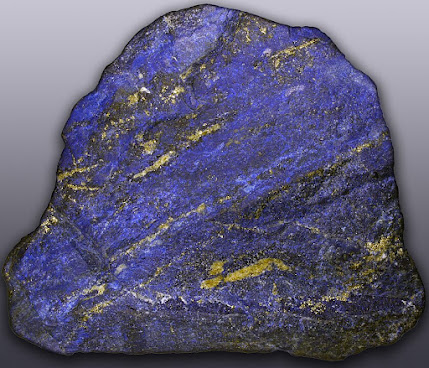The Weird History and Chemistry of Pigment: Ultramarine Blue
Introduction to Ultramarine:
Lapis Lazuli, also known as ultramarine, has long been revered as one of the most exquisite and coveted pigments in the history of art. Its deep blue hue, derived from a rare and precious mineral, has adorned the works of master artists and illuminated the pages of ancient manuscripts for centuries. Join me as we delve into the fascinating story of Lapis Lazuli, exploring its origins, production, and artistic significance.
Extracting Ultramarine from Lapis Lazuli:
The pigment, ultramarine, comes from the mineral, Lapis Lazuli. It is mined from remote regions such as Afghanistan, Chile, and Russia, where deposits of the semi-precious stone are found. The largest source and the most historically significant was Afghanistan. Smaller amounts can be found in Pakistan, Italy, Mongolia, the USA, and Canada. It was originally traded as a decorative stone and used in expensive jewelry long before it was ground up for pigment.
The natural pigment (shown above) was used by many civilizations throughout history, like the Egyptians, Greeks, Incans, and many more. It was one of the brightest blues available for most of history. Although, it was very expensive given its limited availability, shipping cost/difficulty, and the laborious process to process the mineral into the pigment. The mineral was ground into a fine powder, which was mixed with a wax mixture, wrapped in cloth, washed with lye, then the powder is sifted out.
There is also a synthetic variety of ultramarine, which is much cheaper than the natural variety while being a more vivid, deeper color (as can be seen above).
Chemical Composition and Properties:
Lapis Lazuli is primarily composed of the mineral lazurite along with other minerals such as calcite, pyrite, and sodalite. Lazurite has a formula of (Na,Ca)8(AlSiO4)6(S,SO4,Cl)1–2 with some variation and repeating components. Part of what makes the production of natural ultramarine is the fact that lazurite only makes up 25-40% of lapis lazuli.
Ultramarine has unique properties, including its intense blue color, fine particle size, and lightfastness, making it ideal for use as a pigment in painting and decorative arts. It does not fade in light and is very resistant to other conditions. However, it is very weak to acids, which will bleach the color right out of it. So it couldn't be used in tempera, which commonly contained acids like vinegar.
Artistic Applications and Techniques:
Lapis has been mined for over 6,000 years and has been used as a pigment ever since. It is still used as a pigment to this day.
While it couldn't be used in tempera, it was used in oil mediums. It was most prolifically used in the fourteenth and fifteenth centuries in illuminated manuscripts and Italian wood panel paintings.
Some iconic works utilizing ultramarine includes Girl with a Pearl Earring by Vermeer, and Bacchus and Ariadne by Titian.
Cultural Significance and Symbolism:
Lapis lazuli was significant in many ancient civilizations such as Mesopotamia, Egypt, and Persia, where it was associated with deities, royalty, and the afterlife. This can be inferred from the use in Egyptian mummy paintings and being found in Incan tombs.
The pigment and mineral was often associated with wisdom, truth, and inner peace, reflected in its use in religious rituals, talismans, and ceremonial objects.
Conclusion:
Lapis Lazuli's journey from remote mines to masterful artworks epitomizes the enduring quest for beauty, craftsmanship, and creative expression throughout human history. As we marvel at its luminous blue hue and contemplate its cultural significance, let us embrace the timeless legacy of Lapis Lazuli, honoring its rich history and inspiring future generations to explore the boundless possibilities of artistic imagination.






.jpg)

Comments
Post a Comment